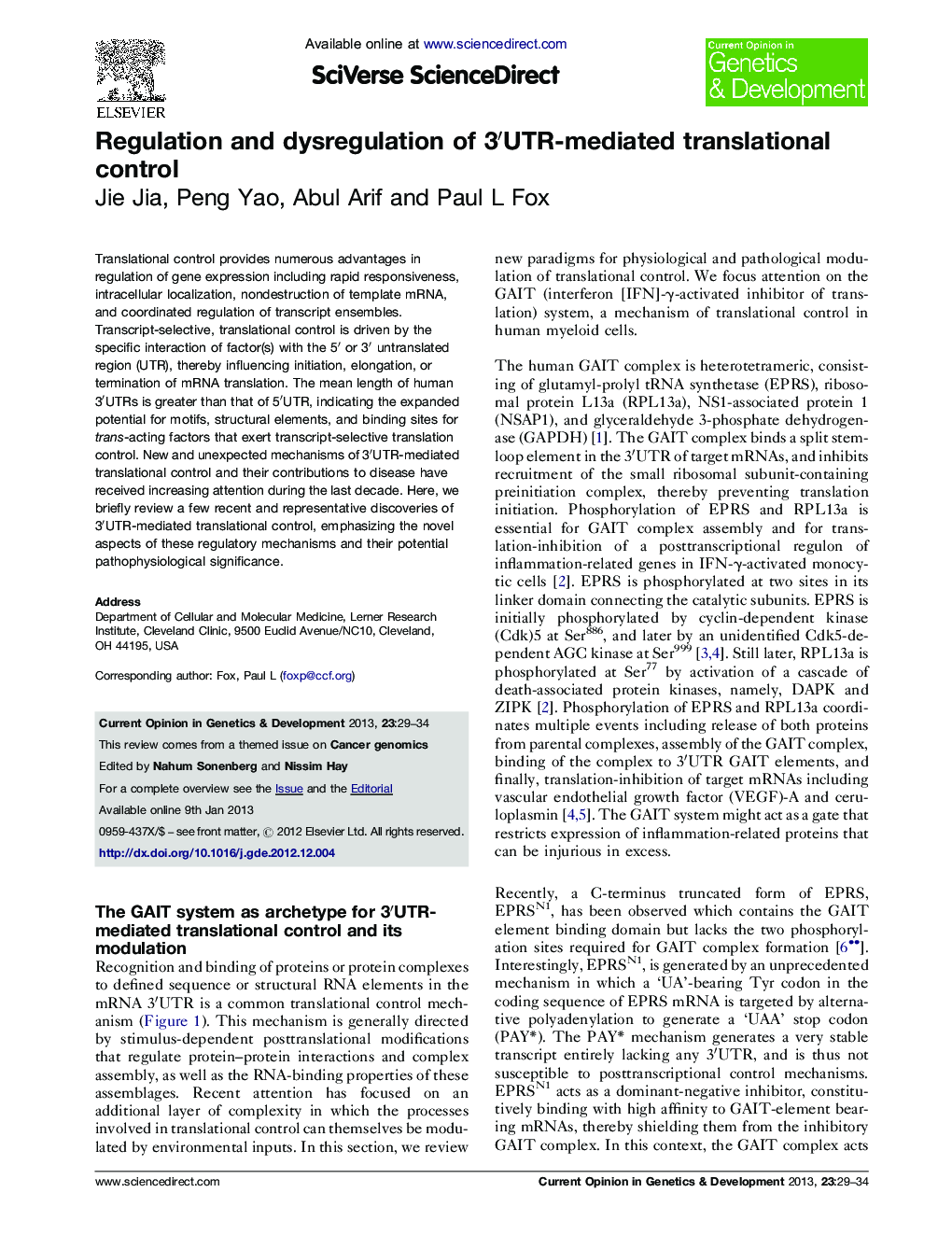| Article ID | Journal | Published Year | Pages | File Type |
|---|---|---|---|---|
| 5893481 | Current Opinion in Genetics & Development | 2013 | 6 Pages |
Abstract
Translational control provides numerous advantages in regulation of gene expression including rapid responsiveness, intracellular localization, nondestruction of template mRNA, and coordinated regulation of transcript ensembles. Transcript-selective, translational control is driven by the specific interaction of factor(s) with the 5â² or 3â² untranslated region (UTR), thereby influencing initiation, elongation, or termination of mRNA translation. The mean length of human 3â²UTRs is greater than that of 5â²UTR, indicating the expanded potential for motifs, structural elements, and binding sites for trans-acting factors that exert transcript-selective translation control. New and unexpected mechanisms of 3â²UTR-mediated translational control and their contributions to disease have received increasing attention during the last decade. Here, we briefly review a few recent and representative discoveries of 3â²UTR-mediated translational control, emphasizing the novel aspects of these regulatory mechanisms and their potential pathophysiological significance.
Related Topics
Life Sciences
Biochemistry, Genetics and Molecular Biology
Developmental Biology
Authors
Jie Jia, Peng Yao, Abul Arif, Paul L Fox,
